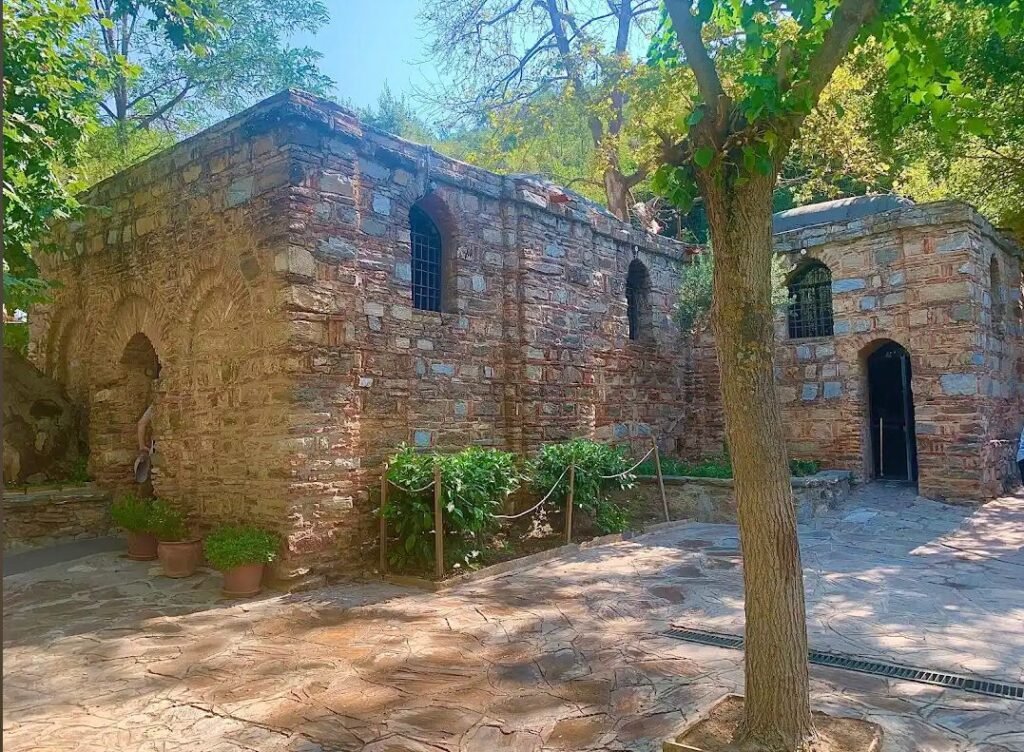Description
Exploring the House of Virgin Mary: A Sanctuary of Faith and History
Nestled in the picturesque hills of Selçuk, within the region of İzmir, Turkey, lies a spiritual and historical gem known as the House of Virgin Mary. Located at Atatürk Mahallesi, Meryemana Mevkii, Küe Evler, this revered site attracts thousands of pilgrims and tourists annually. It stands as a testament to faith, cultural significance, and the enduring legacy of Mary, the mother of Jesus Christ.
Historical Background
The House of Virgin Mary, or "Meryem Ana Evi" in Turkish, is believed to be the final dwelling place of the Virgin Mary. According to Christian tradition, Mary was brought to Ephesus by Saint John the Apostle after the crucifixion of Jesus. Historical texts and religious lore suggest that Mary spent her last years in this serene and secluded area.
The discovery of the house is attributed to the visions of Anne Catherine Emmerich, a 19th-century Roman Catholic nun and mystic. Her detailed descriptions, recorded by Clemens Brentano, led researchers to the site in 1891. Excavations revealed the remnants of a structure consistent with Emmerich’s accounts, and soon after, it was recognized by both the Catholic and Orthodox churches as a sacred location.
Architectural Features
The house itself is a modest stone structure with simple yet profound architectural features. It consists of a small chapel and living quarters, exuding a tranquil ambiance that resonates with visitors. The reconstructed building is believed to date back to the 6th or 7th century, built upon the foundations of an earlier Roman structure.
Inside, the chapel is adorned with religious icons and candles, creating a serene atmosphere for prayer and reflection. The house's simplicity, combined with its sacred aura, evokes a sense of humility and reverence, making it an ideal place for spiritual contemplation.
Pilgrimage and Religious Significance
The House of Virgin Mary holds immense significance for Christians and Muslims alike. In Christian tradition, it is a site of deep veneration as the last earthly home of Mary. The Catholic Church officially declared it a place of pilgrimage in 1951, and it has since received visits from several popes, including Pope Paul VI, Pope John Paul II, and Pope Benedict XVI.
In Islam, Mary (known as Maryam) is revered as the mother of Prophet Isa (Jesus). The Qur’an highlights her purity and piety, further cementing the site’s importance across religious boundaries. This shared reverence makes the House of Virgin Mary a unique symbol of interfaith harmony.
Each year on August 15, the Feast of the Assumption is celebrated here with a special mass, drawing pilgrims from around the world. The site’s universal appeal underscores its role as a bridge between diverse cultures and faiths.
The Wishing Wall
One of the most intriguing features of the site is the Wishing Wall. Located near the house, this wall is adorned with thousands of handwritten notes and fabric pieces tied by visitors. These notes often contain prayers, wishes, and messages of hope. The tradition reflects a universal human desire for connection and solace, adding a deeply personal element to the pilgrimage experience.
The Surrounding Area
The House of Virgin Mary is set amidst lush greenery, offering a peaceful escape from the hustle and bustle of modern life. The surrounding area boasts stunning views of the Aegean landscape, with olive trees and wildflowers enhancing the natural beauty. The tranquil environment complements the spiritual essence of the site, making it an oasis for reflection and relaxation.
For history enthusiasts, the nearby ancient city of Ephesus provides an added layer of exploration. This UNESCO World Heritage Site features impressive ruins, including the Library of Celsus, the Great Theatre, and the Temple of Artemis—one of the Seven Wonders of the Ancient World. The proximity of Ephesus to the House of Virgin Mary allows visitors to immerse themselves in the rich historical tapestry of the region.
Visitor Information
The site is easily accessible from Selçuk and İzmir, with regular tours and transportation options available. Visitors are encouraged to wear modest clothing out of respect for the sacred nature of the site. The house is open to the public throughout the year, with a nominal entrance fee to support its maintenance.
Facilities include a small gift shop, restrooms, and shaded seating areas. Guided tours are available for those interested in learning more about the historical and spiritual significance of the house.
Conclusion
The House of Virgin Mary is more than just a tourist destination; it is a place of profound spiritual significance and historical intrigue. Whether you are a pilgrim seeking a sacred experience, a history buff delving into the past, or a traveler looking for a peaceful retreat, this site offers something for everyone. Its timeless appeal lies in its ability to unite people across cultures and faiths, reminding us of the shared humanity that transcends boundaries.
A visit to this sacred sanctuary in Selçuk is sure to leave an indelible mark on your heart and soul, offering a unique glimpse into the rich spiritual and historical heritage of Turkey..
Location
-
Atatürk Mahallesi, Meryemana Mevkii, Küme Evler, 35920 Selçuk/İzmir







